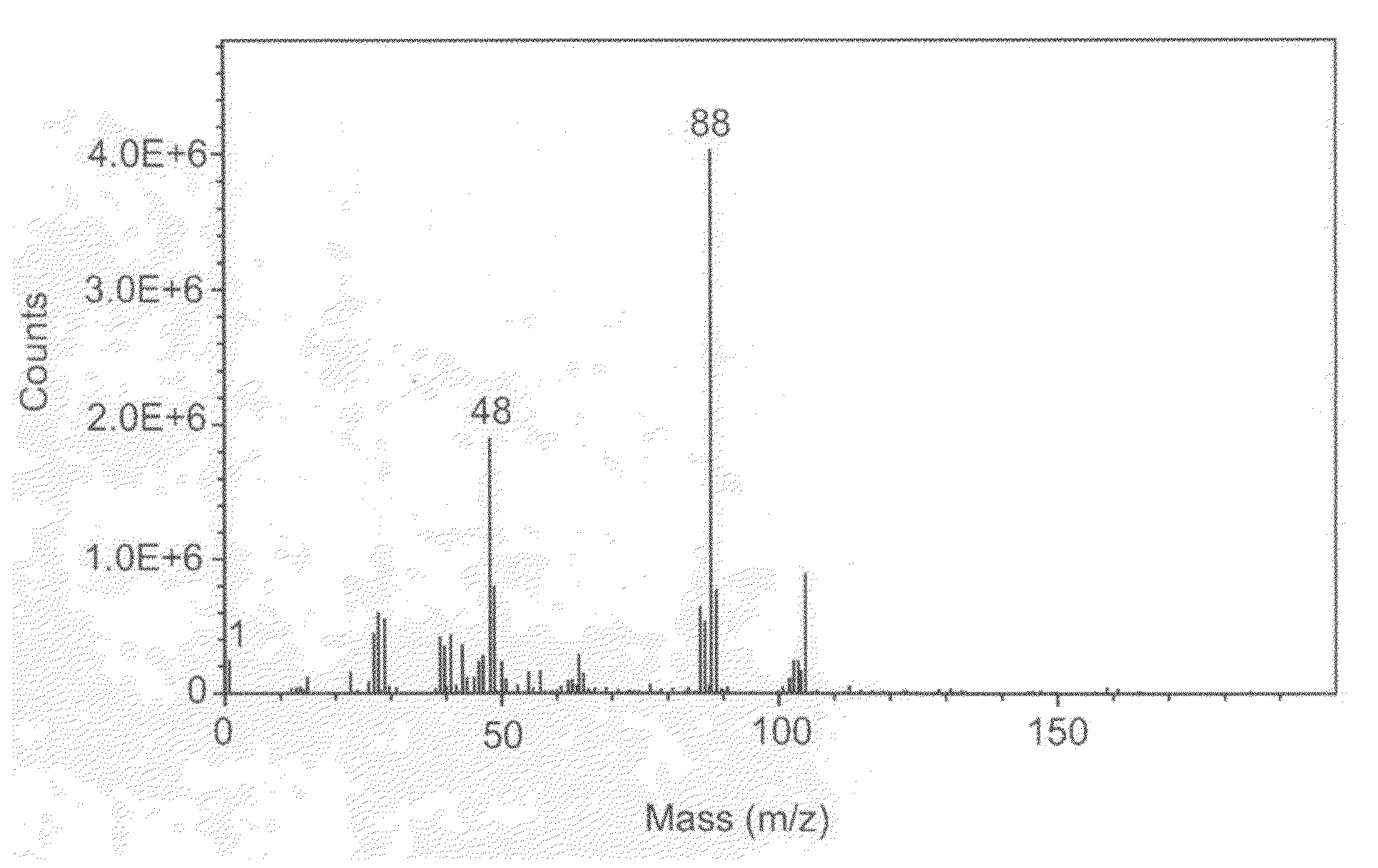Bone tissue implant comprising strontium ions
a bone tissue implant and strontium ion technology, applied in the field of implants, can solve the problems of ultimate failure of the implant, the failure of the second implant part, etc., and achieve the effects of improving the bone formation rate, increasing the production of alkaline phosphatase, and increasing the production of prostaglandin e2
- Summary
- Abstract
- Description
- Claims
- Application Information
AI Technical Summary
Benefits of technology
Problems solved by technology
Method used
Image
Examples
example 1
Incorporation of Strontium Ions into a Titanium Oxide Layer
Reduction in Sr(NO3)2
[0170]Titanium samples were reduced by potential step technique in 0.1M Sr(NO3)2, pH 5-6. A potential step of −3V (all potentials are referred to a double junction Ag / AgCl / KCl reference electrode, 197 mV against SHE) was applied over the sample for 5 minutes resulting in a continuous hydrogen evolution. After the reduction process the samples were rinsed in MQ water in an ultrasonic bath for 2 minutes before drying and sterilization.
[0171]The presence of strontium was identified by X-ray photoelectron spectroscopy analysis (XPS analysis). The results are presented in table 1 below.
TABLE 1XPS analysis of samples reduced in Sr(NO3)2(the amounts are given in at %)SampleSpec.β-sterilizedC1sN1sO1sTi2pSr3d1Srno23.11.153.320.22.02Srno22.70.753.820.12.63Sryes22.11.254.420.81.54Sryes22.41.754.519.81.7
Soaking in Sr(OH)2
[0172]Titanium samples were soaked in 0.1M Sr(OH)2, pH>11, at 40° C. for 10 minutes. After th...
example 2
Release of Strontium from a Titanium Implant Surface
[0175]Titanium samples were reduced by potential step technique in 0.1M Sr(NO3)2, pH 5-6. A potential step of at least −4V (all potentials are referred to a double junction Ag / AgCl / KCl reference electrode, 197 mV against SHE) was applied over the sample for 5 minutes resulting in a vigorous hydrogen evolution. After the reduction process the samples were rinsed in MQ water and dried. The presence of strontium was identified by XPS-analysis.
TABLE 5XPS analysis of samples reduced in Sr(NO3)2 at a potentialmore negative than −4 V (the amounts are given in at %)SampleSpec.β-sterilizedC1sN1sO1sTi2pSr3d13Srno22.70.853.520.92.114Srno22.90.853.521.21.715Sryes23.11.552.720.72.016Sryes21.41.454.421.11.8
[0176]The release of strontium was identified by ICP (Inductively Coupled Plasma). Four coin shaped samples, prepared according to the above, were placed in a beaker with 15 ml MQ water. The water was acidified to pH 4 using 20 mM HNO3 and the...
reference example 1
Culturing of MG-63 Cells
[0177]MG-63 is a human cell line (ATCC No CRL-1427, U.S.) conventionally used in the art for in vitro studies of osteoblasts. MG-63 origins from a human osteosarcoma and exhibits numerous trait characteristics of human osteoblasts, such as alkaline phosphatase (ALP), prostaglandin E2 (PGE2) and osteoprotegerin (OPG).
[0178]In this study, MG-63 cells were obtained from frozen cells in second passage and further cultured in Dulbecco's modified Eagle's medium (DMEM) containing FCS 5%, PEST 1%, Gibco, UK) in 37° C. in an atmosphere of 5% CO2 and 100% humidity. When the cells reached confluence they were subcultured by the use of 0.05% Trypsin-EDTA (Gibco, UK) until the amount of cells were obtained.
[0179]Cell viability was high in all experiments (>98%) and was checked by the use of trypan blue where the uptake of the stain by dead cells was checked in a Bürkerchamber in a light microscope (LM).
PUM
| Property | Measurement | Unit |
|---|---|---|
| thickness | aaaaa | aaaaa |
| thickness | aaaaa | aaaaa |
| thickness | aaaaa | aaaaa |
Abstract
Description
Claims
Application Information
 Login to View More
Login to View More - R&D
- Intellectual Property
- Life Sciences
- Materials
- Tech Scout
- Unparalleled Data Quality
- Higher Quality Content
- 60% Fewer Hallucinations
Browse by: Latest US Patents, China's latest patents, Technical Efficacy Thesaurus, Application Domain, Technology Topic, Popular Technical Reports.
© 2025 PatSnap. All rights reserved.Legal|Privacy policy|Modern Slavery Act Transparency Statement|Sitemap|About US| Contact US: help@patsnap.com



